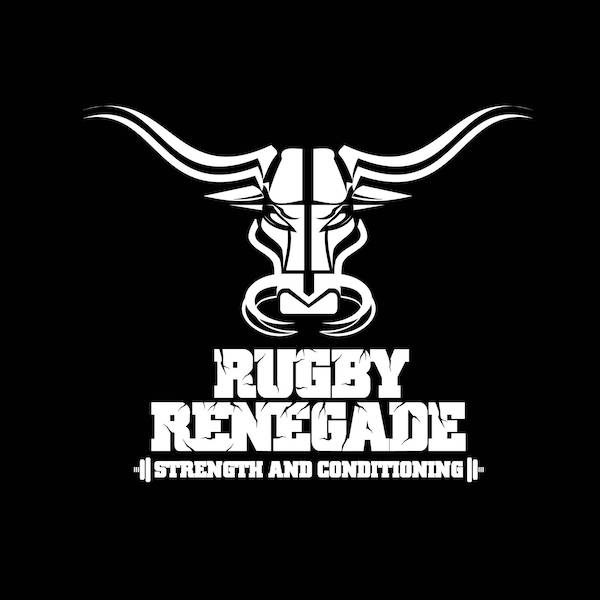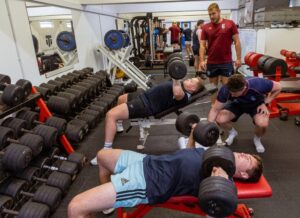General Physical Preparedness (GPP) is the foundation for building a complete Rugby Player. GPP work is designed to bring a Rugby player’s overall conditioning to its highest level. The goal of GPP is to enhance the player’s work capacity. The greater the work capacity of a player, the greater the volume of work the player can perform on the pitch, make more tackles, hit more rucks and be in support of other team mates. It is an area that is usually overlooked by coaches and as a result fails to develop a solid base of athleticism in rugby players.
GPP training will enhance this base in the following ways…
- the core benefits are to increase cardiovascular fitness, speed, balance, flexibility, technique, stability and strength.
- helps to open more neurological pathways, allowing for optimal performance.
- brings up to par the lagging muscles and improvement of technique.
- will serve as a active recovery tool, the quicker you recover the harder you can train, and of course more often.
As a Strength and Conditioning Coach, I am a big advocate of Louie Simmons of Westside Barbell’s Training Methods. Having used many of his methods in my own training and as a result seen great improvements in all aspects of my Strength from Explosive Strength to Absolute Strength. GPP is a critical part of Louie’s training methods, his athletes spend a lot of time using Sleds, Prowlers, Yokes, all pieces of equipment that Rugby Players could and should integrate into their training to raise their GPP.
The Sled is one of the best pieces of equipment that can assist with developing a Rugby Players GPP.
Sled Dragging has been around for years and is by no means a new concept of training, however, how often do you or do you see others incorporating Sled Dragging into their training programmes? I’m guessing very rarely.
The use of Sleds can be traced back to the Scandinavian logging industry where loggers had no choice but to drag felled trees out of the forests. From this heavy work, the men developed powerful legs and lower backs, which perhaps explains why you will often see a number of Scandinavians competing in the Worlds Strongest Man Competition like four times champion Magnus Ver Magnusson (insert picture)
One of the lagging areas in most Rugby Players Physical make up is their Posterior Chain, in particularly their Erectors (Lower Back) Glutes and Hamstrings. This area is critical for any rugby player, as players rely so much on it. The stronger the players are in this area then the benefits are huge, also the risk of injuries will be far less. With stronger Posterior Chains Props will become better at scrummaging, flankers will be stronger over the ball, jackaling, and wings will be harder to stop with ball in hand.
The sled enables a wide range of exercises to suit the rugby players needs. They can be pulled, pushed or dragged. Weight can be added to make the exercise more targeted, whether for power development, muscular endurance or aerobic training. Its versatility means you are able to incorporate Sleds into your Strength and Conditioning programme at any stage and you have the ability to expose yours or others weaknesses.
How can Sleds actually help you as Rugby Players?
Develops Real Strength and Power
It is all good and well being super strong and powerful in the gym but if you don’t have the ability as a player to convert that strength/power on to the pitch then you are wasting your time! Sled work involves full body movements and numerous muscles and joints performing functionally. The arms and legs work together to coordinate movement, and keeping a strong core is crucial to keeping the body stable as the limbs exert force on the sled and training surface, which can vary from grass through padded matts to gravel—with each posing different challenges.
Improves Speed off the mark
Crucial in any sport, not just rugby is the ability accelerate. Acceleration is the rate at which velocity changes with time, or the rate at which something speeds up or slows down. When the body routinely has to work against resistance, it has to work harder with each repetition. With repeated use of the sled, its been shown that a player’s nervous system (which controls muscle function) may learn to work harder all the time (during sprints), and not just after using a weighted sled. When using Sleds for sprinting you must keep the sled load light and not exceed 10% of your body weight.
Conditioning
Like in a game it is important that your conditioning sessions incorporate the practice of pulling and pushing something for time, distance or reps. If the sled is light, you can try and sprint as hard as you can with the sled and it will burn. If it’s heavy, your muscular endurance is going to go through the roof after a few sessions of pulling the sled.
Restoration and Injury Prevention
The benefits of Sled exercises compared to most other types of resistance work is that with sled work there is no eccentric, or negative, part of the movement. For example, when you lower yourself during a squat, you’re performing an eccentric action. The concentric portion occurs when you drive upwards with the weight. You can lower far more weight than you can lift, so this is where most of the muscle damage occurs, which is how muscles become stronger. However, if you want to train frequently or speed up recovery, it isn’t ideal. Since sled training only has a concentric movement, it’s a great way to work your muscles. But that doesn’t mean sled work is any easier than lifting—anyone who has ever trained with a sled knows that it is very tough.
Basic Sled Dragging Exercises
Reverse Sled Drag
Sled Sprints
Horizontal Sled Pull – Bear Crawl
Explosive Sled Pull
Lateral Sled Drag
Single Arm Explosive Sled Press
Single Arm Explosive Sled Pull
Sled Pull Throughs




